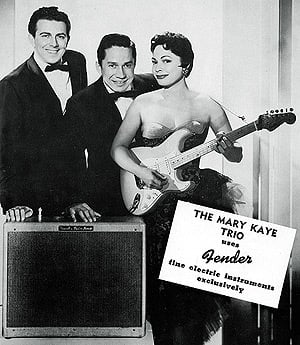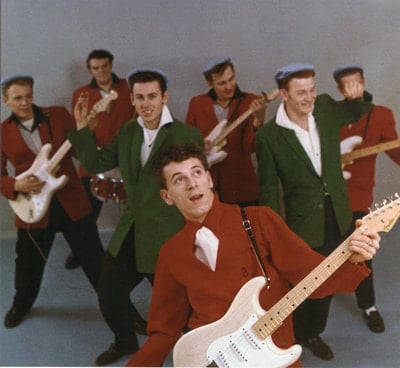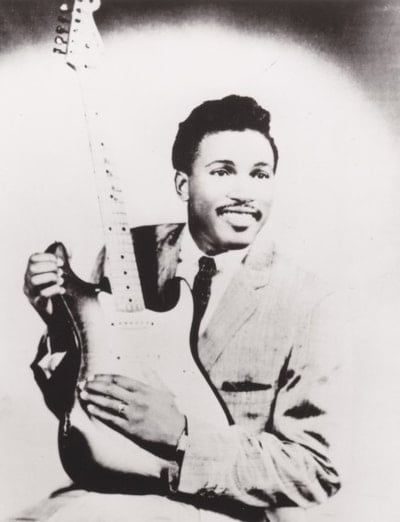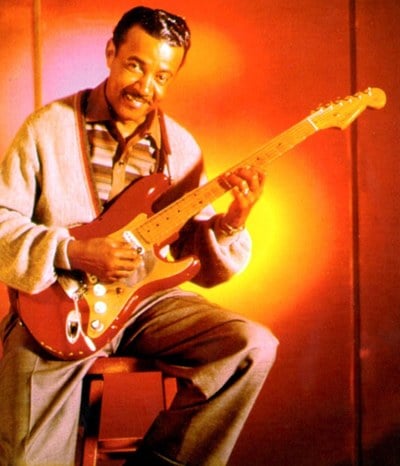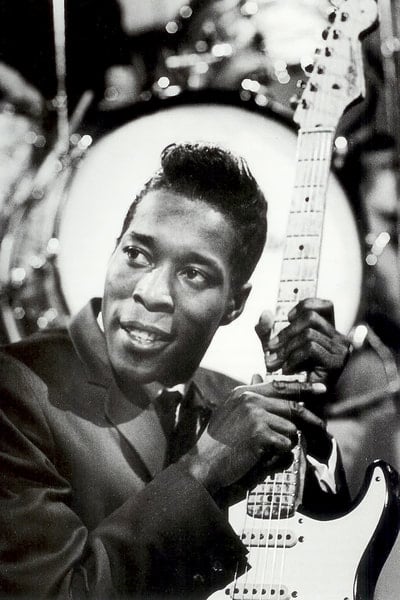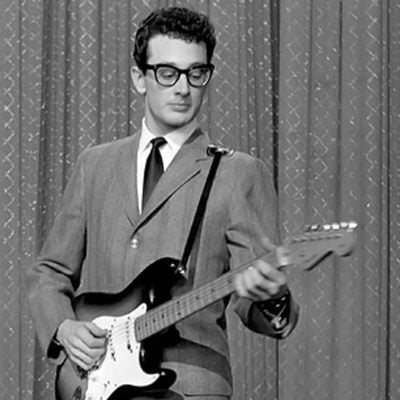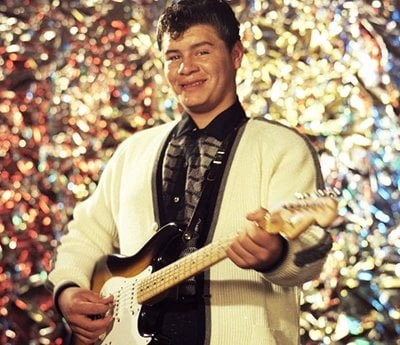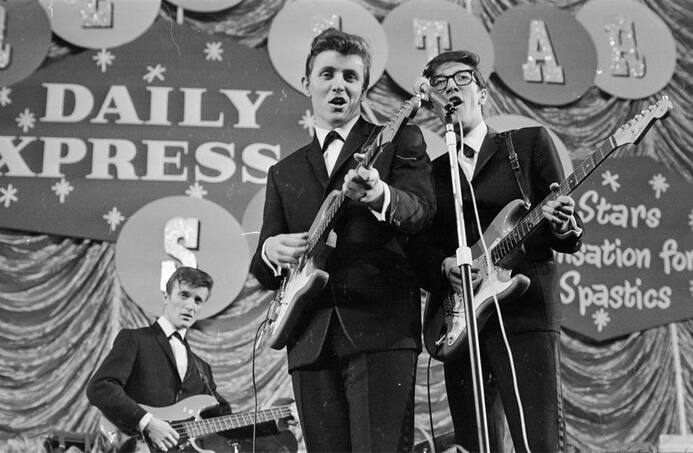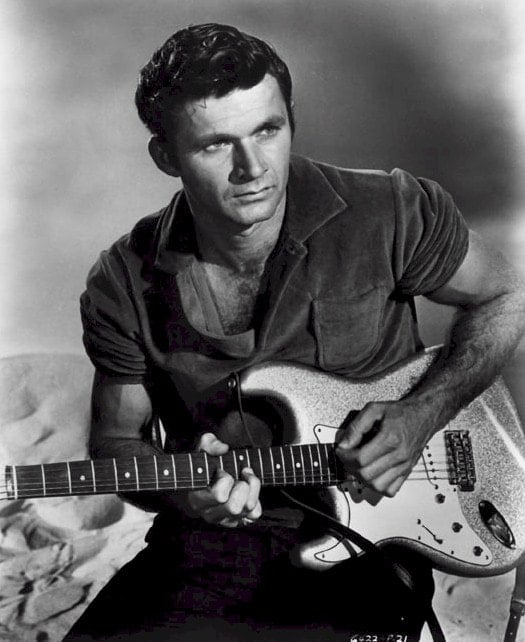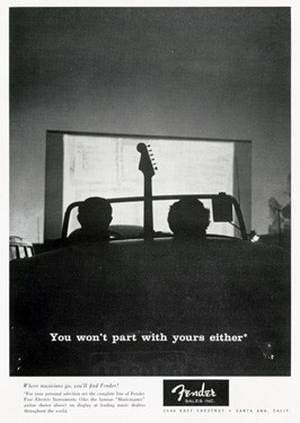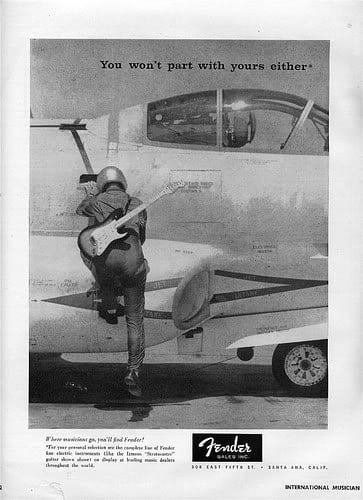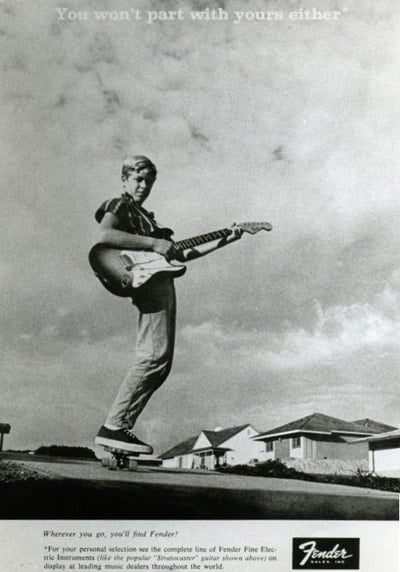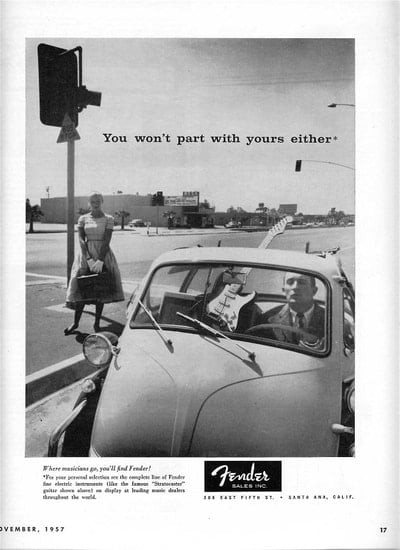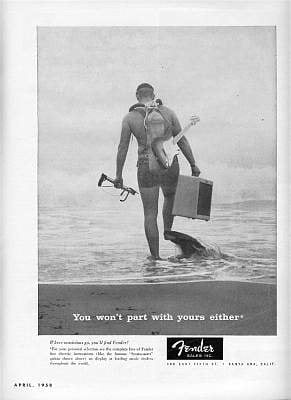In 1954 the foundations of rock and roll had been laid. Television, radio, and long-playing records had arrived. On January 4, 1954, Elvis Presley's first commercial recording session took place at Sun Records, Tennessee. In April, Bill Haley & His Comets released “Rock Around the Clock,” the first rock'n'roll record heard by millions of people worldwide.
The time was ripe for the Stratocaster’s success.
The time was ripe for the Stratocaster’s success.
|
Soon the new guitar came into the hands of many musicians, including Pee Wee Crayton, responsible for Stratocaster’s debut on vinyl in the recordings that included The Telephone Is Ringing, Otis Rush, Buddy Guy, Gene Vincent, author of Be-Bop-A-Lula, and Mary Kaye, nicknamed the First Woman of Rock'n'Roll, who posed in 1956 for Fender catalog with a blonde Stratocaster with the gold-plated hardware which passed into history with her name. Kaye, in reality, didn’t play the Stratocaster in that period. She’d only used it for few minutes for the 1956 Cha-Cha Cha Boom! making, and for the advertising, at the insistence of Don Randall. After that, the guitar was returned back to Fender.
The most important guitarist who widely used the Stratocaster in the '50s was Buddy Holly, a Texan musician that in a few years composed many rock'n'roll, country and rockabilly songs. With a modern and impeccable style, he pushed guitar performance to the limit soon becoming a teen idol. |
In 1957, the 21-year-old Buddy Holly and his Stratocaster first appeared at the Ed Sullivan show. Certainly, his television appearances increased the sales of Stratocasters. However, despite his enormous contribution to the spread of the Fender brand in the 1950s, Buddy Holly did not enter any catalog until 1982. This probably due Randall’s conservative tastes being little inclined to rock'n'roll. In fact, he preferred to use more traditional artists to promote his products. Unfortunately, Buddy Holly died prematurely, in February 1959, along with another Stratocaster-loving musician, Ritchie Valens, a Mexican-born guitarist famous for his performance of La Bamba.
Business was going so well that in 1956 Fender built four more plants on South Raymond Avenue and, a little later, Fender Sales also moved to a larger location, at 1536 East Chestnut, in Santa Ana.
In the '60s the fame of the Stratocaster grew even more, due to the surf music of the Beach Boys and Dick Dale, the left-handed guitarist famous for his Misirlou and Let's go trippin', who used to play a Stratocaster connected to a Showman amplifier, driven to crazy volumes, and to a Fender reverb unit.
Business was going so well that in 1956 Fender built four more plants on South Raymond Avenue and, a little later, Fender Sales also moved to a larger location, at 1536 East Chestnut, in Santa Ana.
In the '60s the fame of the Stratocaster grew even more, due to the surf music of the Beach Boys and Dick Dale, the left-handed guitarist famous for his Misirlou and Let's go trippin', who used to play a Stratocaster connected to a Showman amplifier, driven to crazy volumes, and to a Fender reverb unit.
THE STRAT IN THE UK
|
Until 1959, due to a 1951 import law, Stratocaster had been a purely American phenomenon; however, many British guitarists were yearning the new US guitars. In particular, Hank Marvin, guitarist of The Shadows was obsessed by Buddy Holly’s and James Burton’s sound (he thought that Burton played a Stratocaster, but he actually played a Telecaster). When the import law was repealed in 1959, Hank could finally order his famous red Stratocaster with gold hardware. Thanks to the success that the Shadows had in Great Britain, the Stratocaster's popularity spread very quickly overseas.
|
Pre-CBS Stratocaster: first Changes
In the middle of 1956 Fender started using alder, easier to work, than ash, as the main body wood for Stratocasters that were not finished in Blond. Because of the more stunning results with ash, Fender continued making see-through blonde Stratocasters from this beautiful, figured-grain wood.
At first, Fender used a two-color sunburst finish. In mid-1958, 2-Color Sunburst was changed for a 3-Color Sunburst, with red blended between dark brown and yellow. The following year there were two other important changes: the introduction of Brazilian rosewood fretboards and the replacement of the old eight-hole pickguard with eleven-hole celluloid ones. Because of its unstable nature, celluloid had the characteristic of turning brown over time, especially if subjected to light or smoke. So, these pickguards were never completely white, but showed a greenish-yellow hue, hence the name of mint green pickguards.
At first, Fender used a two-color sunburst finish. In mid-1958, 2-Color Sunburst was changed for a 3-Color Sunburst, with red blended between dark brown and yellow. The following year there were two other important changes: the introduction of Brazilian rosewood fretboards and the replacement of the old eight-hole pickguard with eleven-hole celluloid ones. Because of its unstable nature, celluloid had the characteristic of turning brown over time, especially if subjected to light or smoke. So, these pickguards were never completely white, but showed a greenish-yellow hue, hence the name of mint green pickguards.
Antonio Calvosa
In a period in which musical instrument companies aimed at austerity, the campaign started in 1957 by the agency Perine/Jacoby in Los Angeles, centered on the young, creative and progressive nature of its instruments, was a great success. Bob Perine immediately identified the segment of the population to which the ads were to be destined and proposed the slogan "You won't part with yours either", largely used in the 50s and 60s and rediscovered many years later.



